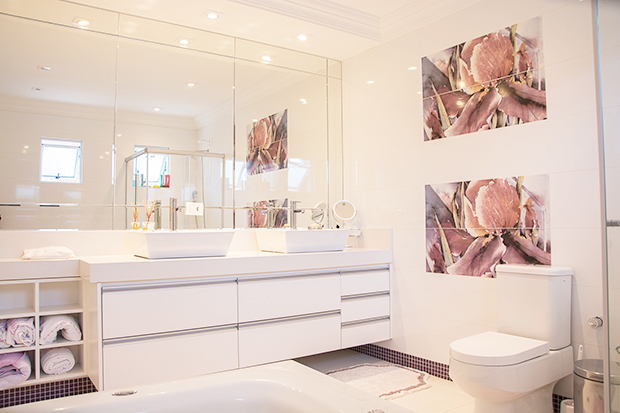People come in all shapes and sizes, so when it comes to our bathrooms, height is just one of the factors that might influence where we put our bathroom amenities. With so many design influences available to modern home owners, it can be easy to lose sight of functionality when plotting out your new bathroom. So, what needs to be considered to keep our bathrooms accessible and functional, while still looking great?

When it comes to our bathroom vanities, we tend to think of the standard cabinetry and benchtop configuration found in most modern homes. A typical vanity benchtop will sit at around 800mm from the ground, comprising of a 200mm high kick panel and approximately 600mm of cabinetry. While this is the most common arrangement for vanities, it does not mean that other levels aren’t achievable.
Keeping benches on an even keel
For those of us on the extreme ends of the height scale, we need alternatives to keep things comfortable. Bathroom odds and ends need to be within reach in a safe manner, particularly when electrical appliances are involved such as hair straighteners. For a private bathroom or ensuite, setting the level to a comfortable height is not unmanageable. When designing a communal bathroom, for example, one to be used by guests or children, keeping the height within the average range makes for a functional bathroom. A happy compromise is to install a vanity bench at a lower height with an above mount basin.
Height, however, is not the only element to consider when designing a bathroom. With many Australians mobility impaired, vanities need to be designed to not only allow access but to keep everything within reach. This could involve the use of a semi-recessed vanity, where the cabinetry is narrower than the benchtop, or a wall mounted vanity. Irrespective of the type of vanity being installed, the height of the benchtop would need to suit the individual’s needs but ultimately need to be designed to the relevant Australian Standards.
Mirror, mirror on the wall… or the door…
Mirrors in bathrooms tend to follow a uniform design. That is, most bathrooms are fitted with a 1000mm high mirror that is as wide as the vanity, with the bottom of the mirror sitting above a row of tiling. With bathrooms becoming a personal sanctuary, however, the norm is slowly becoming the exception. For folks installing feature basins and wall mounted plumbing fixtures, the bottom of the mirror may need to be raised. Wall mounted plumbing fixtures may look sharp but check with your plumber before getting one to see what’s involved with fitting them.
A mirror’s height should be based on its function, and so keeping it within an average eye level is ideal. While having a vanity mirror can help when applying makeup or shaving, a smaller mirror isn’t as functional when you want to see what your entire outfit looks like. In these instances, fitting a full-length mirror to either the wall or behind the door will help put things into perspective.
Just a fingertip away
With our bench heights set and our mirrors helping us look sharp, we also need to think about where our accessories will sit. Much like setting the heights for our benchtops, these will also need be at an easily accessible level. Install towel rails at waist height. Similarly, soap dishes or shower recesses are ideally situated at a level that is easy to reach without having to stretch too far, either up or down, which could lead to slipping and potentially injuring yourself.
As with any redoing or updating of our homes, getting the right advice can make all the difference between a dream home and a nightmare. To find out how to get the most out of your new bathroom, give our professionals at JEDI Plumbing a call today on 0411 774 381.

